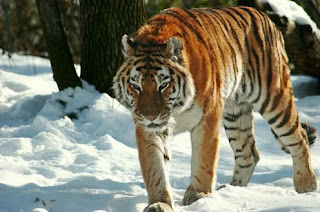Global warming is caused by green house gases, which trap in the sun’s infrared rays in the earth’s atmosphere, which in turn heat up the earth’s atmosphere. The global warming has happened in the past few years and is evident from the rise in mean temperature of the earth’s atmosphere.
The "Greenhouse effect" is the heating of the earth due to the presence of greenhouse gases. It is named this way because of a similar effect produced by the glass panes of a greenhouse. Greenhouse gases naturally blanket the earth and keep it about 33 degrees Celsius warmer than it would be with without.
You maybe asking then why is all this concern about green house gasses? Well the rapid rise in greenhouse gases is a problem because it is changing the climate faster than some living things may be able to adapt. Also, a new and more unpredictable climate poses unique challenges to all life.
Now, with concentrations of greenhouse gases rising, Earth's remaining ice sheet are starting to melt too.
Greenhouse Gases also can be released into the atmosphere due to the burning of fossil fuels, oil, coal and gas. These materials are used increasingly and rampantly in Industries. Therefore Industries are also a major cause of the Greenhouse Effect. Man-made processes that contribute and are a cause to the Greenhouse effect are burning of gasoline, oil and coal. Apart from these, some farming and land-use processes are a cause of the Green house effect. Most factories also produce many gases. Which last for a longer time in the atmosphere, these gases contribute to the green-house effect and also the global warming on the planet. These gases are not naturally available in the atmosphere.
If we do not cut back on certain stuff that may cause these certain green-house gasses global warming can increase and we do not want that.
http://www.earthhelpers.info/greenhouse_gas.html
http://www.examiner.com/green-technology-in-nashville/green-gases-101
http://www.chemistryland.com/CHM107/GlobalWarming/GlobalWarming.html
http://www.mangalorean.com/browsearticles.php?arttype=Science&articleid=842
http://www.earthhelpers.info/greenhouse_gas.html
http://www.examiner.com/green-technology-in-nashville/green-gases-101
http://www.chemistryland.com/CHM107/GlobalWarming/GlobalWarming.html
http://www.mangalorean.com/browsearticles.php?arttype=Science&articleid=842
























